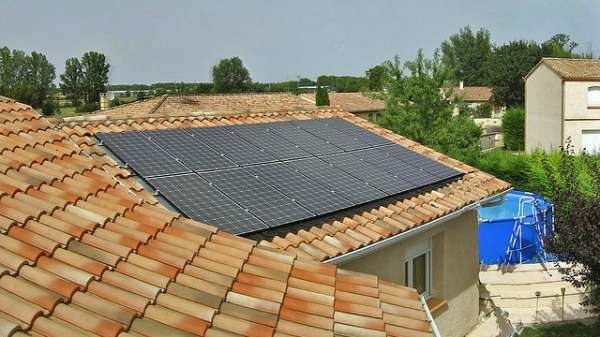How solar panels are making waves

If you think of electrical current flowing like water from the grid to your home, you can start to imagine the waves your rooftop solar panels create when they try feeding current in the opposite direction.
Now multiply that by 180,000, the number of West Australian homes operating rooftop solar panels, and it's clear our power grid has never been more complicated.
And with complication, comes expense.
Current policy sees ordinary homes hooked up to just one of three electrical phases supplied by the grid, which is perfectly sufficient for powering the average home.
Problems arise, however, when supply from rooftop solar panels exceeds demand, reversing the flow of power in that single phase for that single house, while the power in the other phases are still flowing downstream.
An expensive way past the problem is to connect every home to all three phases, according to Curtin University Department of Electrical and Computer Engineering Professor Arindam Ghosh.
Since the peaks and troughs of each cycling phase are slightly offset, supplying three phases smooths the current into a more regular supply, he says.
As well as being expensive this solution would be wasteful as it would mean supplying extra wires to customers who don't really require them.
Fix-all for power woes
A more economical solution, Prof Ghosh says, is to use Distribution Static Compensators (DSTATCOMs).
"They're a device that can shape your power supply, a power-quality enhancement device," Prof Ghosh says.
DSTATCOMs could be a fix-all for regulating the quality of Perth's power supply: the devices balance supplied current between all three phases, reducing surges, boosting sags, and ironing out instability and flicker.
"They can also act as energy storage," Prof Ghosh says.
"They can store excess energy in batteries, you could then use this energy to shave off the evening peak energy use."
DSTATCOMs work by taking the single-phase reverse-flowing current your solar panels feed into the grid, then rapidly redirecting that current into whichever of the three phases need it most, balancing supply according to demand.
Prof Ghosh and his team have been developing efficient ways to connect and control DSTATCOMs so the devices will work with existing power transformers.
"Eventually we'll see large uptake of solar, but right now higher penetration will be difficult unless we see policy change," he says.
Ultimately, integrating DSTATCOMs would mean a smarter grid, reducing headaches for electrical utilities and increasing the integration of renewable energies, Prof Ghosh says.
More information: Farhad Shahnia et al. Circulating the reverse flowing surplus power generated by single-phase DERs among the three phases of the distribution lines, International Journal of Electrical Power & Energy Systems (2016). DOI: 10.1016/j.ijepes.2015.09.021
Provided by Science Network WA
This article first appeared on ScienceNetwork Western Australia a science news website based at Scitech.


















